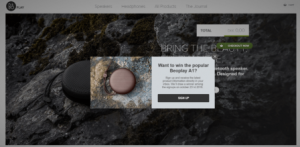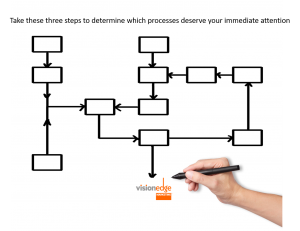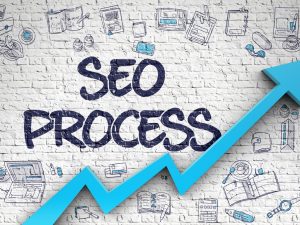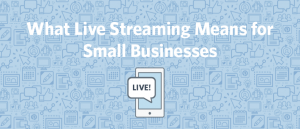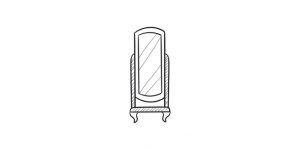Are you a hero?
Do you swoop in to save the day for your customers?
Can you see through client problems as though you had X-Ray vision?
Are your products a veritable philosopher’s stone, turning even the most mundane objects into gold?
If so, I have bad news for you:
You’re not the hero your customers need right now … even if you’re the one they deserve.
Unmasking The Real Hero
Superhero analogies aside, if there’s one error I see business owners making over and over and over again in their marketing it’s this:
They see themselves as the hero, coming in to save the day.
But here’s a secret for you:
Most of your customers don’t want to be saved.
They’re fiercely independent. They like to take charge. They actively seek out solutions to their problems.
In other words, they’re used to being the hero.
That’s why your job, in promoting, selling and launching your products and services, isn’t to be the hero…
… it’s to help them be the hero they already want to be.
Fortunately, there’s a very simple map you can use to help you along the way.
The Hero’s Journey
Even if you don’t know it by name, you’ve probably heard of the hero’s journey; it’s called the monomyth for a reason.
From superhero comics to Star Wars to The Matrix and Lord of the Rings, (ed: and yes, Harry Potter!) the framework pioneered by Joseph Campbell is the quintessential “zero to hero” storyline that so much of modern storytelling is built upon.
The protagonist starts out living a normal, everyday life until …
… something happens! Gandalf shows up (or maybe it’s Obi Wan) and invites our unknowing hero to an adventure …
… which they promptly refuse.
Eventually, of course, they accept the mission and enter into A Whole New World.
Along the way, there are tests and enemies; new friends and allies; an ordeal and a reward.
Finally, they achieve their goal, and return with the magical elixir.
A perfectly amazing hero story.
Which makes it the perfect storyline for your next product launch or sales cycle.
In fact, from initial warm-up content through to last-chance sales emails, the stages of the hero’s journey map perfectly to the content you should be creating for your community.
(Note for the purists in the crowd: you’ll recognize the following as being based on Christopher Vogler’s 2007 adaptation, rather than Campbell’s original framework. It fits better.)
Part One: The Departure (Pre-Launch Content)
Every hero begins as just a normal person, and so it is with your prospective buyers.
They are living in an ordinary world, going about their business when suddenly … they encounter something they can’t handle on their own.
This is the call to adventure; the moment when they break out of their everyday routines because they realize that something needs to change.
Of course, you can wait for them to heed the call to adventure on their own … or you can help create that call to adventure by pointing out their misconceptions and challenging their assumption that the status quo is all there is.
Their natural tendency, of course, is going to be to refuse to become heroes. Change is hard; if it were easy, they wouldn’t be where they are right now.
That’s why the next piece of content needs to show them what the cost of refusal is. Simply by contrasting the reality that could be if they take action with the inevitable result of inaction, you are setting the stage for them to rise to the challenge.
Once they’re ready to consider change, they’re primed and ready for you and your business to step in as a mentor. Using personal stories and examples, you can demonstrate your expertise and prove that there is a solution, if only they will heed the call.
If you do all those pieces correctly, they’ll be ready to take their first tentative steps forward; to cross the threshold and begin their journey with you.
They’re not ready to buy, yet … but they’ll be willing to see what you have to say. Use this opportunity to provide them with a lead magnet, webinar, or other first-step invitation.
Part Two: Initiation (Launch Content)
Once they’ve accepted your invitation and have become a prospect, you can now begin the process of helping them decide to become a buyer.
In the hero’s journey, the initiation phase kicks off with tests, allies and enemies:
Neo encounters Agents, and learns to manipulate the Matrix. Luke gets stuck in a bog with R2, and witnesses the power of the Force. The Fellowship is formed, and subsequently gets torn apart.
Your prospects will encounter similar challenges on the pathway to becoming a buyer, in the form of objections. They’ll come up with countless reasons not to buy, and your content must equip them to deal with all possible opposition. At the same time, you have the chance to position yourself as an ally who can help them get where they want to go.
In other words, you call out their objections — the enemies that would prevent them from moving ahead — and show how, with you at their side, those objections become moot. And then you invite them to buy.
The next step in the hero’s journey is literally called the approach, and that’s the perfect way to handle the next piece of content:
Talk about your approach.
You show why it’s different, why it’s awesome, and why it’s exactly what they need.
For your buyers, a buying decision can feel like staring down into a deep, dark cavern. They know that inside is a gleaming jewel, but without some encouragement, they won’t take the steps to make their approach.
That’s not to say it’ll be easy. Inside every cavern, of course, is an ordeal of some sort. A balrog of incredible power that stands between your hero and their reward.
Maybe for your hero, it’s a spouse nattering doubts in their ear. A hard drive full of courses, purchased but never bought. A laundry list of expenses that never saw an ROI.
That’s why the final piece of the initiation is to share a case study or extended testimonial: show how it’s possible to vanquish their foe, overcome their ordeal, and claim their reward.
Part Three: Return (Last Chance Content)
By this point in your launch sequence, many of your heroes will have made the decision to buy.
They’ll have heeded the call to adventure, crossed the threshold into your world, and made the decision to invest in your product or service.
But others will not have done so yet.
For them, there is one important stage of the journey remaining: the return.
The return back is almost a revisiting of what’s happened thus far. It’s your chance to remind the prospect of what the journey has been thus far, and what reward awaits them. In other words, it’s your chance to reiterate in brief the launch to-date, answer FAQs, and encourage them not to give up now, but to cross the finish line strong.
At some point, though, the journey — your launch — will end, and they will have to make a choice:
To accept their status as the hero of their own journey and invest …
… or to fumble the ball just before crossing the goal line (or, I suppose, the chalice just before reaching home).
That’s the purpose of last-chance emails, after all. To give people one more opportunity to finish their story as a hero.
The Map Is Not the Territory
The hero’s journey is just one framework you can use to plan and outline your content and launch strategy. One map you can use to help people become buyers.
It’s not the only way, of course. The map is not the territory; a plan is not your content.
You need to adapt the language and the framework to work within your business, and your model. The hero’s journey can show you the general shape of what you want to accomplish, but it’s up to you to turn that framework into actual content.
That’s why we’ve developed a special Hero’s Journey Launch Content Checklist, as part of our free School of Operations content series. It outlines the 12 different stages of the hero’s journey and tells you exactly what kind of content to produce for each.
DOWNLOAD THE HERO’S JOURNEY LAUNCH CONTENT CHECKLIST.
Ultimately, though, what matters more than any framework or checklist is this simple fact:
Your customers want to be the hero of their own journey.
Your job, and the job of your products and promotions, is to help them do that.
Business & Finance Articles on Business 2 Community
(63)
Report Post